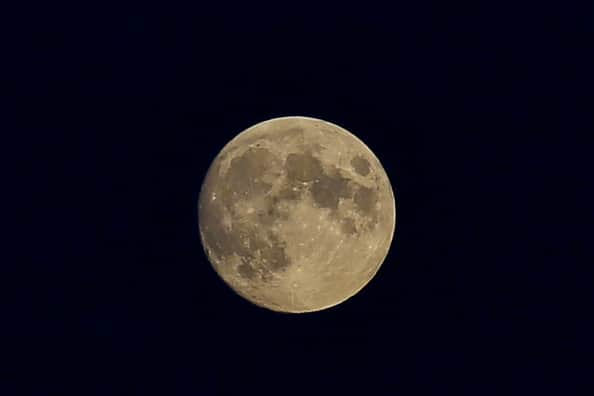The mysterious side of the Moon reveals hidden structures, researchers say
and live on Freeview channel 276
Astronomers have uncovered hidden structures deep below the surface of the moon's far side. China’s Chang’e-4 mission rover, called Yutu-2, peered 300 meters beneath the surface of the Moon in a move that reveals billions of years of lunar history.
The Yutu-2 rover helped make the discovery via its Lunar Penetrating Radar (LPR) that imaged deep into the moon’s surface by listening to echoes of sound that bounced back off structures under the lunar surface and hidden from view. Yutu-2 and Chang’e-4 made history back in 2018 as the first human objects to land on the far side of the moon – the side that faces away from the Earth.
Advertisement
Hide AdAdvertisement
Hide Ad

Previously the rover’s ground penetrating radar (GPR) was used, but those earlier efforts could help map only the top 40m, or about 130ft, of the moon’s surface.
The analysis suggests the first 130ft under the lunar surface is made up of layers of dust, soil, and rocks and there is a presence of a buried crater that formed when a large object slammed into the lunar surface. There is also evidence that ancient lava flows under the moon.
“The GPR sends electromagnetic pulses into the lunar interior and receives echoes from subsurface layers. We use the high-frequency channel data to detect the structure of the upper 40 m along the rover’s path, primarily consisting of rock debris and soil,” researchers explained in the study.
Scientists suggest the broken rocks around this formation was likely debris produced by the impact.
Advertisement
Hide AdAdvertisement
Hide Ad“Through this investigation, we have discovered multiple layers in the upper 300 m, which likely indicate a series of basalt eruptions that occurred billions of years ago,” they wrote.
The new study, published recently in the Journal of Geophysical Research: Planets, revealed lunar lava likely flowed across the landscape in this part of the moon billions of years ago, supported by the volcanic rock layers being thinner the closer they are to the lunar surface.
“The thickness variation of these lava flows suggests a decrease in eruption scale over time,” they noted.
This evidence, the researchers suggested, say the lunar volcanic activity cooled gradually since the moon’s formation over 4.5 billion years ago.
Advertisement
Hide AdAdvertisement
Hide AdIt is suggested the Moon formed 4.51 billion years ago when a Mars-sized ancient planet, dubbed Theia, crashed into Earth. A chunk of Theia became the Moon. Then, the Moon experienced 200 million years of repeated pelting by asteroids as the solar system took shape. Some impacts were forceful enough to break the lunar outer crust and force hot magma onto the surface.
“The thickness of the strata decreases with the decreasing depth, suggesting a progressively smaller lava effusion rate over time,” scientists concluded.
Comment Guidelines
National World encourages reader discussion on our stories. User feedback, insights and back-and-forth exchanges add a rich layer of context to reporting. Please review our Community Guidelines before commenting.
